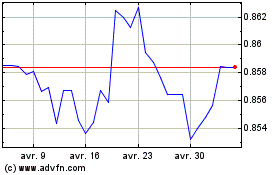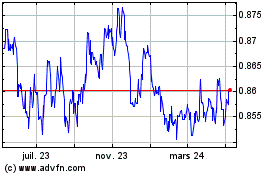UK Meets Budget Deficit Target In FY2016-17
25 Avril 2017 - 9:41AM
RTTF2
The British government limited its budget deficit for the
financial year 2016-17 almost within its targets and the figure hit
the lowest level seen since the financial crisis.
In the financial year ending March 2017, public sector net
borrowing decreased by GBP 20 billion to GBP 52.0 billion, data
published by the Office for National Statistics showed Tuesday.
This was the lowest deficit since the financial year ending
March 2008 and slightly above the Office for Budget
Responsibility's estimate of GBP 51.7 billion.
The deficit was at 2.6 percent of gross domestic product in the
2016/17 financial year.
It is pleasing and welcome news for Chancellor Philip Hammond as
he essentially met the markedly lowered 2016/17 fiscal target
contained in March's budget, IHS Markit economist Howard Archer
said.
This is helpful for the Chancellor's and government's
credibility, which is all the more welcome given the looming snap
general election, Archer added.
March's UK public sector finances figures confirmed the large
fall in borrowing that the OBR expected in the 2016-17 fiscal year
but, with much of the drop due to temporary factors, borrowing is
set to rise in 2017-18, Scott Bowman, a UK economist at Capital
Economics, said.
Nonetheless, looking through these temporary factors, fiscal
policy is still set to provide a significant drag on GDP growth
over the next few years, the economist said.
In March, PSNB excluding banks increased by GBP 0.8 billion from
the previous year to GBP 5.1 billion in March. This was the highest
March borrowing since 2015.
At the end of March, public sector net debt was GBP 1.72
trillion, equivalent to 86.6 percent of GDP.
Euro vs Sterling (FX:EURGBP)
Graphique Historique de la Devise
De Mar 2024 à Avr 2024

Euro vs Sterling (FX:EURGBP)
Graphique Historique de la Devise
De Avr 2023 à Avr 2024
